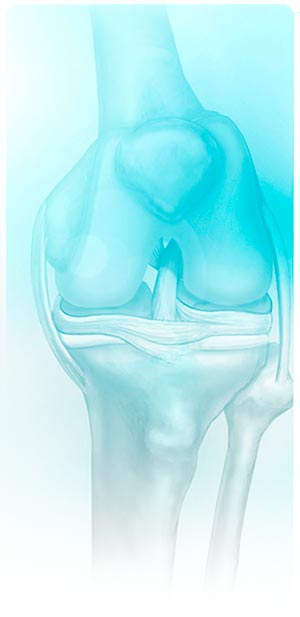The Knee
 an introduction
an introduction
Most people never give their knees a second thought. They function on a daily basis and enjoy the mobility of a pain-free existence. Patients who experience knee pain due to injury or the onset of Osteoarthritis can scarcely recall what it feels like to live pain-free. Let’s take a look at the anatomy of the knee, the symptoms caused by specific conditions and the treatment options available to restore your knee to the best possible function.
Were you a high school athlete? Did you play competitive sports through your early adult years? Have you had a knee injury such as a torn meniscus? Or, do you simply have long standing knee pain? Have you been told that you have “arthritis”? Have simple activities such as walking around the mall, a game of catch with your kid or getting in and out of a car become painful chores? Have you been told you have no options? Finally, do you feel frustrated that your knee pain is changing the way you live?
Each year, more than 5 million Americans injure their knee and more than 2 million require a physician to evaluate cartilage damage. Whatever the cause, the result is the same: pain and swelling that makes it difficult or impossible for you to have the active lifestyle you enjoy.
Some of these injuries are treatable by simple conservative means but many cases they require surgery to appropriately evaluate and treat either meniscal cartilage or articular cartilage damage. These injuries if left untreated can lead to chronic joint changes and may eventually lead to joint replacement. But, strategies are being developed to treat knee injuries earlier and aggressively. Fortunately, there are new treatment options, many of them available only in the last few years. This gives the patient the best chance of avoiding disabling knee problems in the future.
Knees are designed to withstand the pressures of a lifetime of walking, running, sitting and standing. But in many cases, the joint’s delicate balance is disturbed. An injury may cause the meniscus to tear, or may give rise to defects in the articular cartilage. The injury is not limited to major trauma. It can occur with normal daily activities such as simple squatting or repetitive injury such as overtraining. Other activity or even incorrect weight training, especially in the young athlete can cause a lifetime of problems. Over time, small defects in the cartilage can worsen, leading to more widespread damage and, eventually, the pain and disability of arthritis. This type of arthritis is called Osteoarthritis.
Orthopedic surgeons associated with Arlington Orthopedic Associates have developed the Joint Preservation Center (JPC). A full range of contemporary treatment options for knee pain, including the latest minimally invasive procedures are now available locally.
Many of these surgeries are performed arthroscopically as an outpatient while others occasionally require a simple overnight hospital stay. In some cases we demonstrate how to prevent or significantly slow the onset or progression of arthritis, using innovative methods for restoring damaged cartilage. One of only a handful of designated cartilage restoration centers in the United States, the Joint Preservation Center has made elevating your lifestyle by restoring your knee to its best function our major priority.